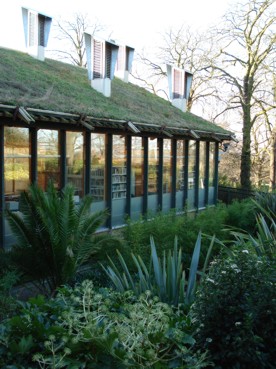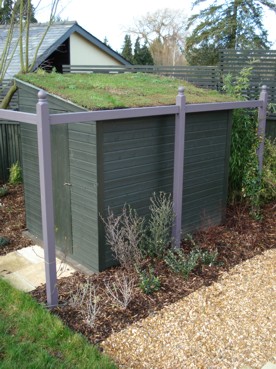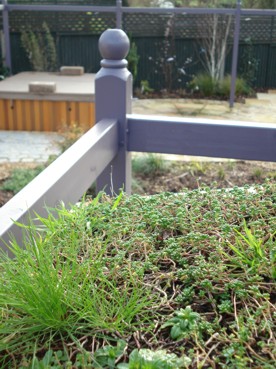Green Roofs
Sky gardens for the future
Green ‘living’ roofs are a perfect example of intelligent design, where valuable roof space is enhanced with a unique ecosystem, not only benefiting wildlife but also adding to the quality of the living space underneath that roof.
Green roofs are not a new concept, indeed they’ve been used in Scandinavian construction for centuries. However, their surge in popularity here in the UK has been driven by the increasingly important ecological principles of conserving water and the creation of sustainable habitats for local wildlife. Another added benefit is the roof’s ability to help insulate a building during the winter (thus lowering heating costs) and also keep it cooler in summer.
Learning to help the environment
There are many fine examples of living roofs, notably the brand new Princes Park stadium in Dartford and Riverhead School in Sevenoaks, the latter designed by Architects Design Partnership. The curved school roof features a living ecosystem of sedums which give the new contemporary building not only a rural aspect but also offer a valuable source of food and nectar for local butterflies and other insects.
Since it is the younger generation who will have to live with the way we are affecting the environment now, it is perfectly apt that the Horniman Museum in Forest Hill, London also boasts a living roof above its library, built as part of its Centenary Development. Children visiting the museum are enthralled by a garden growing up above their heads. Maybe there will be future architects among them?



Creating your own sky garden
There are principally two main types of green roof, intensive and extensive. Intensive roofs are generally commercial systems, able to support the heavy weight of a deep growing medium. The structure of the building itself is often designed to carry this bigger load and planned at the outset. Extensive systems however, are those generally with a substrate depth of 20- 100mm (approx ¾” to 4”) deep. This type of green roof is also the most suitable for the garden and an ideal way of covering an ugly shed or garage roof.
Before you start on your green roof project, there are two questions to ask. Firstly, will the structure you’re covering be strong enough to take the load? Small sheds are easy to do although garage roofs may need to be checked by a structural engineer before starting work. Secondly, will the roof be waterproof when it’s finished?
You can create your own ‘sky garden’ on a shed roof by first applying a butyl liner over the roof surface – be careful not to nail it to the roof otherwise you’ll compromise its waterproof integrity. Next, build a wooden framework on top of the liner made up of small squares, which will hold the growing medium (soil and crushed brick). Framework depth only needs to be 5-20cm (2” – 8” depending on the type of plants you want to grow). Bigger plants will need a deeper framework. Fill the frame with the growing medium and then plant up with sedums and other drought tolerant plants like alpines and tuft-forming grasses.
Living the high life
Your living roof will provide you with a wonderful array of seasonal colours and textures through the year and you’ll probably notice that other wild flowers start to appear by seed blown in with the wind or dropped by birds. The wildlife will be quick to find your oasis in the clouds, too. The marvellous thing about such roof gardens is they require very little maintenance and can cover unsightly buildings in a way which benefits local wildlife.
Designers and architects are making the most of our precious landscape space, be it on the ground or on the roof. We can all reduce our ‘carbon footprint’ by designing our gardens in ways which improve air quality and increase the diversity of the local ecosystem. Only by keeping the environment at the forefront of design can we create sustainable landscapes and buildings which benefit not only our standard of living today but also that of generations to come.